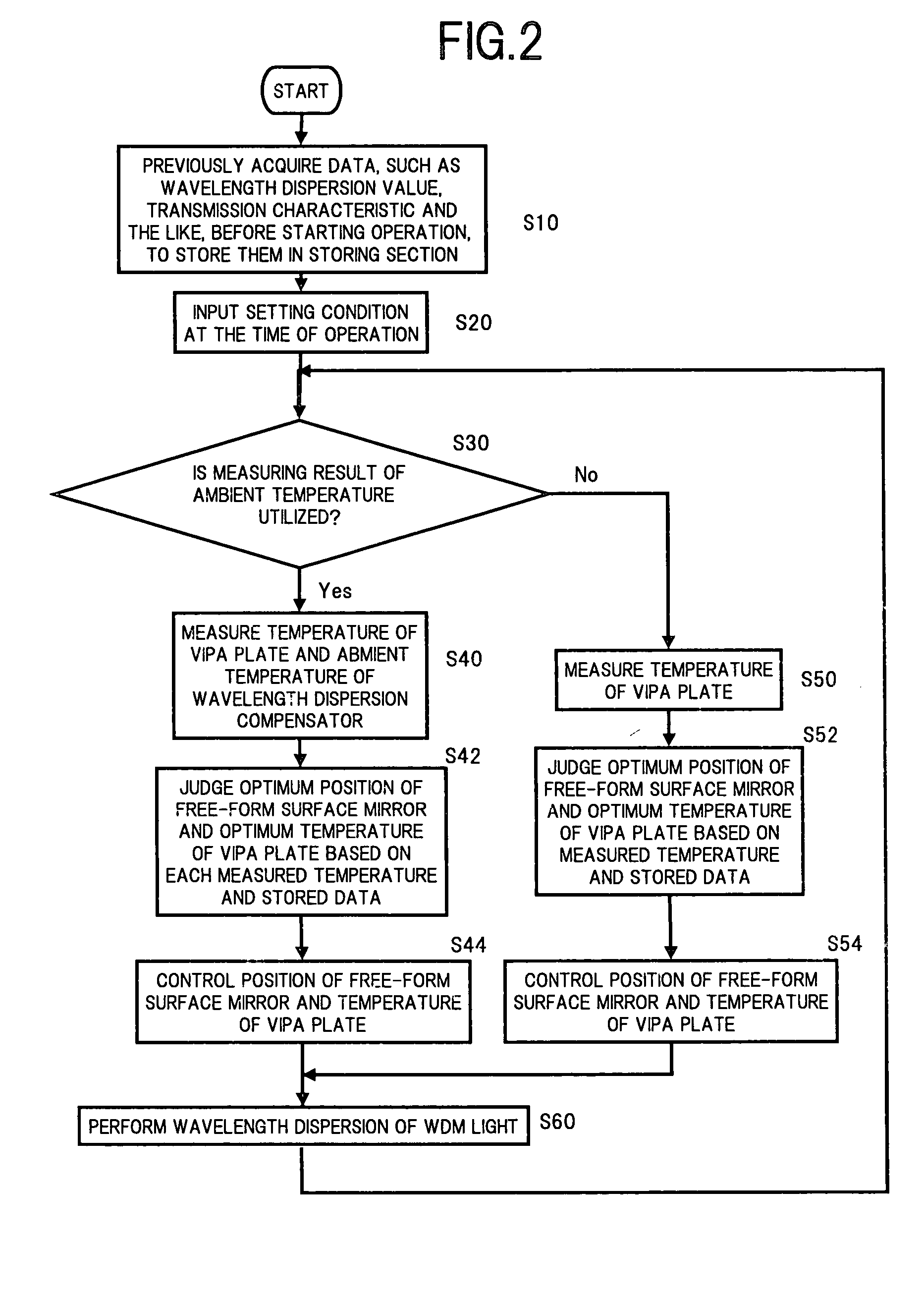Control method of wavelength dispersion compensator, and wavelength dispersion compensator
- Summary
- Abstract
- Description
- Claims
- Application Information
AI Technical Summary
Benefits of technology
Problems solved by technology
Method used
Image
Examples
Embodiment Construction
[0027] Hereinafter, embodiments of the present invention will be described with reference to drawings.
[0028]FIG. 1 is a functional block diagram showing a configuration of one embodiment of a wavelength dispersion compensator according to the present invention.
[0029] In FIG. 1, the wavelength dispersion compensator of the first embodiment comprises, for example: a VIPA plate 1 as a device having two reflective surfaces which are opposed and parallel to each other; an optical system which consists of an optical circulator 2, an optical fiber 3, a collimate lens 4 and a line focal lens 5, enabling a WDM light condensed on a segment to be incident on a radiation window 1D of the VIPA plate 1; a convergent lens 6 condensing an optical beam that has been multiple-reflected by the VIPA plate 1 to be emitted from one of the parallel surfaces, on one point; a free-form surface mirror 7 serving as a reflector, for reflecting the light condensed by the convergent lens 6 at a required positi...
PUM
 Login to View More
Login to View More Abstract
Description
Claims
Application Information
 Login to View More
Login to View More - R&D
- Intellectual Property
- Life Sciences
- Materials
- Tech Scout
- Unparalleled Data Quality
- Higher Quality Content
- 60% Fewer Hallucinations
Browse by: Latest US Patents, China's latest patents, Technical Efficacy Thesaurus, Application Domain, Technology Topic, Popular Technical Reports.
© 2025 PatSnap. All rights reserved.Legal|Privacy policy|Modern Slavery Act Transparency Statement|Sitemap|About US| Contact US: help@patsnap.com



